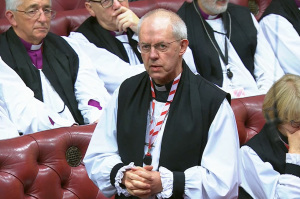King David-Era Temple Unearthed Near Jerusalem
Archaeologists in Israel announced on Wednesday that they have found a 2,750-year-old temple filled with pottery and clay figures which might have been the site of a ritual cult.
"The ritual building at Tel Motza is an unusual and striking find, in light of the fact that there are hardly any remains of ritual buildings of the period in Judaea at the time of the First Temple," the Israeli Antiquities Authority said in a statement. The excavation site is located not far from Jerusalem, and was originally found by the National Roads Company, which is building a new highway in the region.
The First Temple as described in the Old Testament of the Bible was built by Solomon, son of Kind David, roughly around the 10th century BCE., the organization explains on its website. But the Israeli Antiquities Authority directors say the newly discovered temple "must have been active in an era prior to the religious reforms throughout the kingdom at the end of the monarchic period which abolished all ritual sites, concentrating ritual practices solely at the Temple in Jerusalem."
The temple apparently has massive walls and a wide, east-facing entrance, conforming to the tradition of temple construction at the time. "The rays of the sun rising in the east would have illuminated the object placed inside the temple first, symbolizing the divine presence within," the directors added.
Other notable features include a square altar surrounded by ritual items, such as pottery chalices, decorated ritual pedestals and two types of pottery figurines. Among them were human-like heads and harnessed horses, suggesting a Philistine coastal culture influence.
"The find of the sacred structure together with the accompanying cache of sacred vessels, and especially the significant coastal influence evident in the anthropomorphic figurines, still require extensive research," the Israeli Antiquities Authority warned.
"What we can say for sure is the figurines served for religious purposes, and that Tel Motza was a Judaean kingdom," Anna Eirikh, one of the group's directors, told AFP:
"It's very interesting to see these religious artifacts and temple so close to Jerusalem, a walking distance," Eirikh added. "We know very little about religious practice during the Judaean kingdom, there are two or three more sites of worship, and this is the closest to Jerusalem."
The Kingdom of Judah was established around 930 BCE and lasted until 586 BCE, and Jerusalem was its capital, before it was destroyed by Neo-Babylonian ruler Nebuchadnezzar II.





























